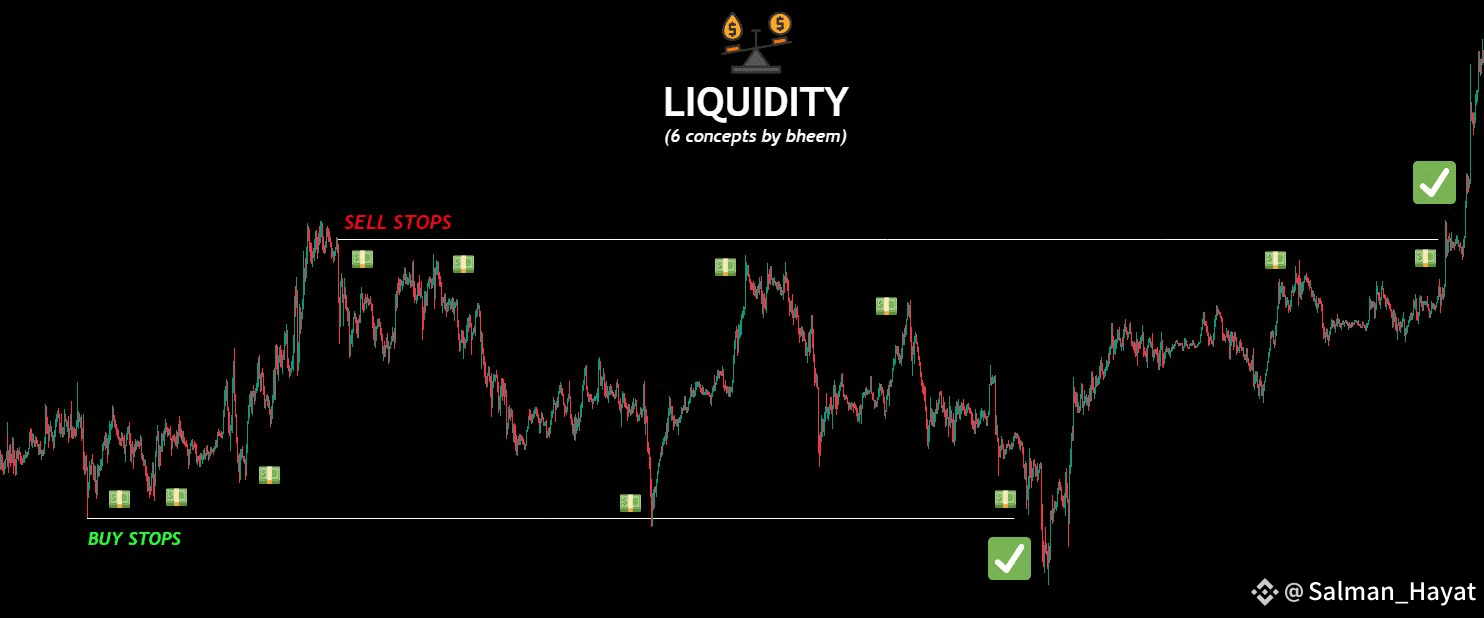If you can’t identify the Liquidity- You will be the Exit Liquidity🩸
 #Range Bound Liquidity:
#Range Bound Liquidity:
Understanding how price moves within and around trading ranges is key to making smart decisions and avoiding common mistakes. This concept, known as range-bound liquidity, helps you identify where other traders might be "puking" their positions, creating opportunities for those who wait patiently.
🧐 The Core Idea: What Is It?
Imagine a price range, defined by a high and a low. Most traders see these clear levels and place their orders right there. We, however, want to do the opposite: we look for liquidity just outside the range's boundaries to "fade" or go against the immediate herd.
Why? Because these immediate, obvious levels are what we call "retail liquidity"—the easy-to-see targets that many traders chase. The real opportunity lies in the "latent" or hidden liquidity beyond these levels, which a patient trader can use to their advantage.
🎯 The Rule of Thumb: Patience Pays
A crucial principle to remember: before price makes a significant move in one direction, it will almost always sweep the liquidity above or below its current range pivots (the range high/low). This is a deliberate move to "trap" traders who enter too early.
Think of it this way: everyone sees the same thing. Everyone who rushes in gets stopped out when the price briefly moves against their intended direction. Your job is to wait for this predictable "liquidity sweep" and then enter the trade.
📉 Traps to Avoid: The Double Tap
History shows that if price "taps" or "raids" a pivot level more than twice, it's a signal that the initial move is likely to fail. This happens because the majority of traders who bet on that initial direction are getting stopped out, or "puking" their positions, into latent levels like Order Blocks, Demand, or Supply zones.
You have two choices here:
Passive Liquidity: Place a limit order into the "fade" (the move against the initial direction) and wait.
Active Liquidity: Wait for the price to reclaim the range pivot after the sweep. This is a much safer, more confident entry. By waiting for confirmation, you are entering with the new momentum, not against it.
👶 The "Developing Range" Problem
The third type of range I mentioned is a "developing range" that forms right next to a higher time frame (HTF) range. This is a common trap! When a new range "smooches" or overlaps with an existing one, it often creates a confusing, choppy environment where it's hard to establish a clear bias.
This is where most traders, including myself, get faked out and lose money. The best move here is to do nothing. Wait for a confirmed area of interest (POI) to form before taking any action.
💡 Putting It All Together: A Real Example
Consider the example I shared:
Price first swept the low because there was a lot of obvious, "visible" liquidity there.
Even if you missed that initial low, there was still an opportunity to enter on the continuation higher.
This is because the overall trend-based liquidity was still in place. The main trend was still up, and the sweep of the low was just a temporary hunt for liquidity before continuing the main move.
The lesson? Don't get fixated on catching the absolute low or high. By understanding the overall liquidity flow and the trend, you can still make substantial profit even if you miss the perfect entry. The key is to have a clear bias and wait for confirmation
